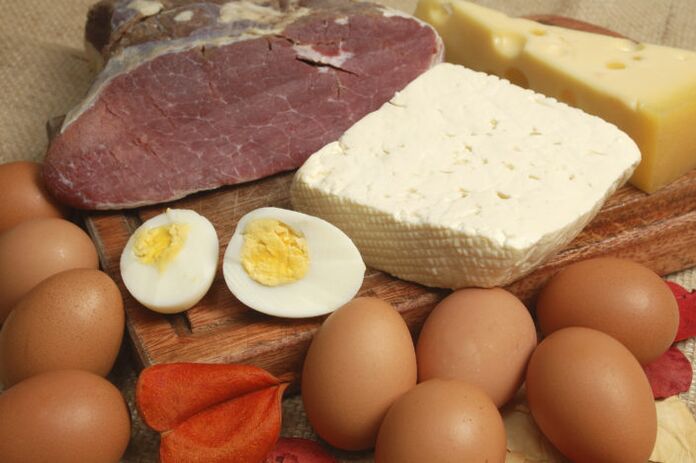Keto diet.Ketogenic diet, what is it?What are the results of the keto diet and what are the reviews?How does it work, are there any difficulties, what is the menu of the keto diet and is there any harm.

- keto diet
- The keto diet is a low-carb, high-fat diet that aims to nourish the body with ketones.
Why is the ketogenic diet effective, what are the contraindications and reviews, what is the principle of action?What should a keto diet menu include and what about reviews from people who have lost weight?This is what we will discuss today.
How does the keto diet work?
When our diet contains fats, proteins and carbohydrates, our body gets energy from glucose.We get glucose from carbohydrates.Now that grocery stores are within easy reach, this is the most popular food category.But what happened back then when carbohydrate products such as cereals or bread were insufficient due to crop failure, habitat or seasonality?
The carcass is forced to obtain energy from fatty acids and proteins.You may remember my video on running for weight loss - here it is - in which I looked at the process of gaining energy through fatty acid oxidation.Now I will briefly remind you that all organs with mitochondria in our tissue cells work perfectly with fatty acids.These are heart muscle, cardiac and skeletal muscle (like the ones we pump in the gym) and smooth muscle.
However, our brain, which is 60% fat, does not lose weight;even prolonged fasting does not cause significant harm to mental abilities.Why?The reason is that the blood-brain barrier (BBB) is a barrier that ensures the stability of the environment inside the brain.It is he who does not let fatty acids pass - not outside (which is why the brain does not lose weight), but also inside.And the brain cannot consume fatty acids as an energy source.
However, the brain cannot exist without fuel, and nature has provided that due to the inability of the diet to provide sufficient amounts of glucose, the brain turns to an alternative fuel source - the so-called ketone bodies.
- ketone bodies
The three substances are called ketone bodies
- acetoacetic acid (acetoacetate)
- beta-aminobutyric acid (hydroxybutyrate)
- acetone
These substances are formed in the liver from fatty acids and this process is called ketogenesis.Not much acetone is produced;Our main fuel is beta-aminobutyric acid.It is because of this that much of the central nervous system functions during periods when there are no carbohydrates in the diet.

Is the keto diet bad or not?
Ketogenesis is a completely normal metabolic process and there is no need to fear it.All the fear comes from the fact that ketosis - when the body operates on ketone bodies - is often confused with pathological acidosis that requires emergency intervention.But these are different and now we will discuss a little what the essence is.
ketoacidosis
What is it - ketoacidosis.This is similar to a state of ketosis, but the cause is not a lack of glucose due to a lack of carbohydrates but a lack of insulin.Let me remind you that our most important hormone, insulin, is a transporter.This is our feeder who knows how to transport glucose across cell membranes.
When there is a lot of glucose but no insulin or it does not perform its functions, the cell, as in the case of a carbohydrate-free diet, begins to feel hungry for energy.As a result, the body produces a series of hormones that can break down fats (lipolytic, in this case they are called anti-inverters) and the liver begins to produce ketone bodies from fatty acids.So what's going on?
There is a lot of undigested glucose, there are also a lot of ketone bodies, the kidneys try to get rid of the excess ketones and glucose, causing dehydration - called osmotic diuresis.Due to diuresis, the electrolytes will be washed away - and you remember this is very, very bad in this video, even two - the balance of electrolytes will shift towards acidification and as a result this ketoacidosis develops.All this requires urgent hospitalization, since the patient can easily move his horse.
It is absolutely clear that this situation can only occur in two cases
- Type 1 diabetes, when the pancreas does not produce insulin
- Dehydration - diarrhea, vomiting, diuretics.
That is, if you are healthy and do not have type 1 diabetes, you do not need to fear ketoacidosis at all.In your case, the nervous system will work perfectly on ketone bodies.
So how to apply the keto diet
Firstlyand the most important thing is to enter a state of ketosis.And this is one of the most difficult tasks.Since in most cases - remember what I told you about homeostasis - people eat foods containing carbohydrates for the first time in decades - this will put stress on the body.The carcass is not used to this and you will not enter a state of ketosis for a day or two.It takes time.First, the body will eat up the remaining glucose and glycogen.It then tries to make glucose from amino acids, glycerol, and lactic acid using gluconeogenesis.And only when he is completely unable to start the ketone process and with a creak does he begin to pull the trophic system of the central nervous system onto new tracks.Remember - the carcass really does not like disturbances in homeostasis and resists as best it can.
This is the most difficult first time - you are dull, angry, have no energy, your mind refuses to work, your mind is dizzy - and a series of other pleasures.And how long this condition lasts varies from person to person, but it can last up to two or three weeks.
Monday.To enter ketosis, you need to cut out carbohydrates or limit them to a minimum - and this is another difficulty.There are organs that cannot use fatty acids or ketone bodies for energy.They need glucose and only glucose - this is intestinal epithelium, vascular endothelium, lens of the eye, adrenal cortex, something else - I don't remember.So you cannot leave them without glucose.Carcasses will get their glucose through gluconeogenesis from your muscles or from minimal carbohydrates provided from food.But that's the point - remember about homeostasis - the desire to maintain balance at all costs - getting into ketosis is hard, but getting out of it is as easy as peeling a pear.And then hello to the fat deposits on the sides of the back.
Tuesday- to enter ketosis, you need to eat a lot of fat and not too much protein!!!!And this is also very difficult to control.Because if there is an excess of protein in the diet - with the help of the same gluconeogenesis, the carcass will immediately produce glucose from it - and you will again fall out of this hard-won state of ketosis.If I eat too little protein, I will gradually lose muscle.And it's very, very difficult for beginners to find this balance.With fats, everything is simple - 80% of the diet should be fat.
Wednesday- difficult to assess whether we have entered a state of ketosis or not.
- Testing for the presence of acetone in urine with a strip makes no sense.We can be in a state of ketosis and there will be no acetone in the urine.
- Blood can be analyzed using a glucometer with special strips for ketone bodies, but these strips are not cheap.
- Finally, there are special devices to detect acetone in breath.They were invented to treat epilepsy because the ketogenic diet is great for dealing with seizures - but they also cost around $100.
And finally, if you decide to try the keto diet, how should you plan your diet?
- protein - 1.5-2 grams per body weight.This is the condition.
- The rest is fat.

What foods are suitable for the keto diet?
- eggs with yolk
- all types of cheese
- fatty cheese
- sour cream
- salo
- pork
- nuts
- salmon
- salmon
- salmon
- lamb
















































































